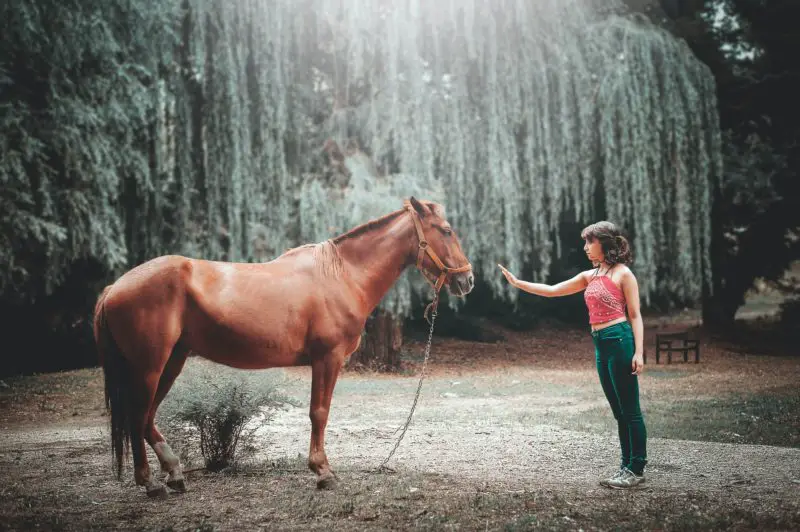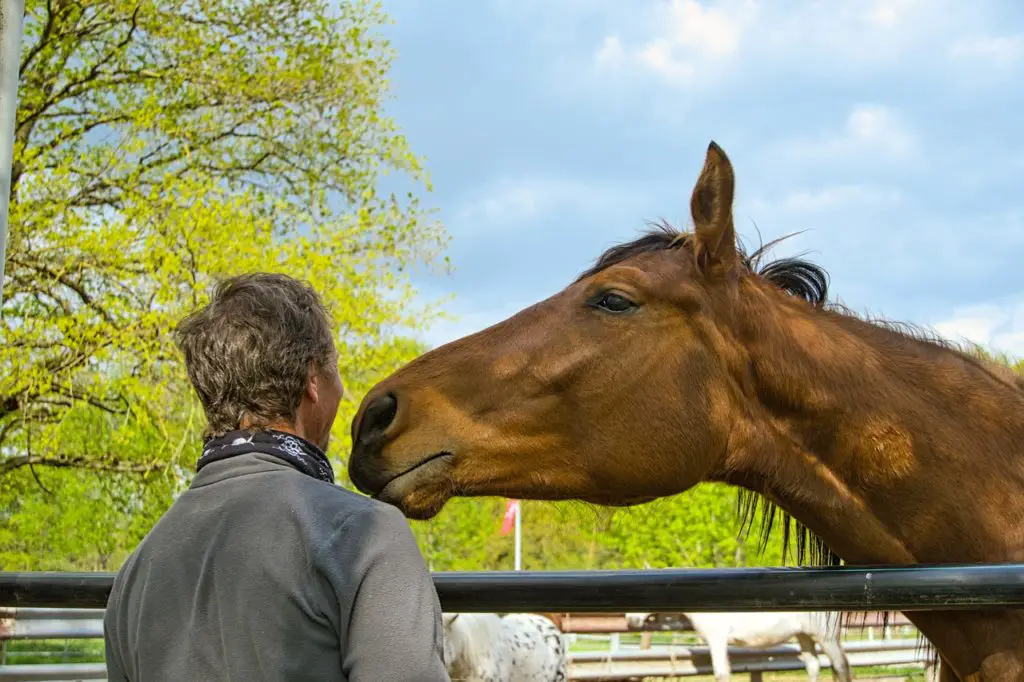How To Bond With A Horse: 5 Tips To Consider
Communication with our little friends is truly amazing. Horse owners know this feeling too well. Bonding with a horse is essential to create a trustful relationship. It will take some time but believe us, it’s worth it.
Every equine requires its personal approach to them. Professional equestrians state that breaking in a horse is not enough to get on with an animal. It’s a step-by-step process that is quite challenging. If you’d like to bond with your horse, there are some useful tips to consider.

#1. First impression
Horses may behave indifferently to a stranger. Equines are careful as they don’t know what to expect from a new person. Keep in mind the horse needs to take its time. The animal has to get used to the new horseman. Do NOT rush. Don’t try making friends with your companion right away.
While the horse is adjusting to you, minimize your physical contact with an equine. Don’t try to stroke the horse obsessively. And moreover, don’t try to mount on it. This can spook a horse or make it aggressive. You may start with the following steps:
- Spend as much time with your companion as possible. This will help the horse to adapt to a new horseman quicker. Having said that, don’t approach the animal too close. You can have a seat near the horse. Have a walk around the equine keeping a distance from it. You’ll notice that the hooved pal is observing all your actions.
- Such routine should be done on a regular basis. Every day sounds perfect. Soon after, the equine starts approaching you to check your reaction. Horses have a greatly improved sense of smell. Get ready the animal is likely to sniff and lick you. While interacting, don’t make rapid moves to the horse. Let the equine know you’re not dangerous.
- When the horse gets used to your presence, it will come closer to you. In response, you can slowly meet the companion. It’s a sign that a trustful relationship has been established successfully. You can go on to the next stage of bonding with a horse.
#2. Mutual communication
When the horse gets used to the new person, the animal learns how to distinguish the man’s voice. In fact, equines have excellent hearing. The ears of the animal are moving constantly. Thus, your tone of voice can be highly recognizable among others.
Speak to your companion in a gentle and calm way. Don’t know what to say to your new friend? No worries! You can talk about everything with your four-legged fellow. Horses find a confident voice more appealing to listen to. So your equine will become even more attached to you.
If you’re not in a rush, read a book or sing a calm song to your new friend. Horses can “read” others’ feelings. They understand whether you’re excited or angry. Thus, horses feel if you have good or bad intentions.
That’s why don’t visit your friend when you’re not in the mood. Once you treat your horse badly, it will be challenging to bring its trust back. And don’t forget to praise your companion from time to time. If the animal behaves itself, give it your smile and “good boy/girl” compliments.

Image by Anrita1705 on Pixabay
#3. Attempt to approach
When making the first steps to the horse, make it slow. While approaching, check the animal’s reaction. If it snorts, the horse shows its displeasure. Don’t come to the horse from its back or front side. You must approach the companion from its side. The reason for it is that horses have poor eyesight. Their eyes are placed laterally on their face. So the area right in front of the equine’s face is a blind spot. Thus, if approaching close to the horse’s face, the equine can be frightened by your sudden arrival.
Try to pet your horse carefully. Start with stroking the equine’s back but not for long. Once you finish, put your hand away and step back. In such a way you will show your companion that you’re not a threat. Horses are obsessed when people stroke their withers. They find it soothing. Try scratching the horse’s fave spot to make your friend relaxed.
If you’re an expressive type of person, hold it back in front of the horse. Don’t overreact in front of the hooved pal. Don’t wave your hands near the equine’s face. The animal may take it as a sign of aggressiveness (and act respectively). Equines are extremely intelligent animals and they can read our feelings. You shouldn’t underestimate this fact.
#4. Get a treat
Enchant your horse with its favorite treats! If you want to bond with your hooved pal, feed him with yummies when he deserves them. The horse will be chuffed to bits, no doubt. Horses are into apples, carrots, sugar cubes, seeds, raisins, and mint candies.
Keep in mind that treats are just a snack, not a full meal. Don’t overfeed your horse with sugar and veggies. As this may lead to colic and other health issues. Use the treats as a reward. For instance, if the equine learns a new trick, praise it with a yummy. When feeding your companion, do it from the open palm. Otherwise, the horse may accidentally bite your fingers.
#5. Patience is a key
All horses are different. Every animal needs a personal approach to be found. If you quickly bond with one horse, that doesn’t mean you’ll do it again with the next one. Equestrian life is full of surprises and challenges.
There are several factors that affect the adaptation process to the new person. They include the horse’s age, breed, and temperament. Here’s what you should know:
- Young equines tend to adapt to new horsemen faster. They can get along with a human almost instantly.
- Older horses are not so easy to make friends with. Especially in the case of the horse that experienced abusive treatment from its former owner. Such animals need months or even years to regain trustful relationships.
- Friendship should be mutual. So don’t force a horse to do what it doesn’t want. Otherwise, you may end up with a rearing or bolting horse.
The final thoughts
Before you hop on a horse, build enough confidence. You have to trust your companion. And your companion should trust you. Work on your relationship before riding. Start with walking with your equine. Like you’re walking a dog, hold your companion with the reins or a lead rope. At the same time, talk to your hooved friend so he can get used to you.
You should act as a leader so the horse can trust you and follow your commands. Some horse breeds are hot-blooded equines with a stubborn tempo. They may show disrespect by pinching you. Work on this behavior to show you’re not going to tolerate such a misdemeanor.
Making friends with horses is challenging. But no matter how hard it is, don’t use brute force to punish your companion. Use the tips mentioned above to strengthen the bond with your horse. Contact a horse trainer to get you through the process. Here in Calgary, you can look for equestrian centers to get professional help.
Once you become friends with your horse, you’ll feel grateful for such a top-notch fellow. Communication with your hooved pal will bring many positive emotions.
